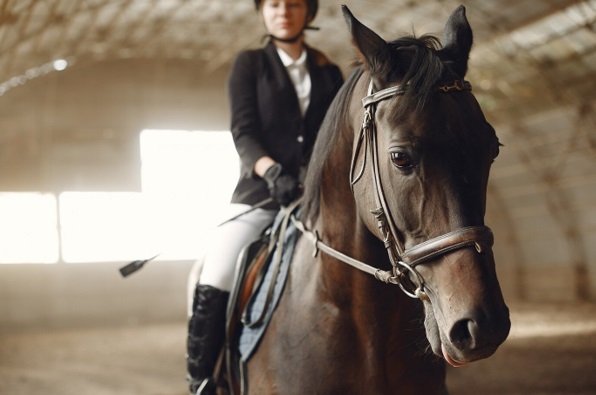
Horse riding is more than just a pastime; it is a profound interaction between two sentient beings, a true embodiment of the symbiotic relationship that can exist between humans and animals. It brings together the primal essence of the beast and the civilized nature of man in a harmonious dance of power, grace, and mutual respect. It isn’t merely about mastering a skill but about forging a connection that transcends the physical and delves into the spiritual. This art form, as old as civilization itself, teaches us about trust, understanding, and empathy, making us not only better riders but better humans.
To truly grasp the art of horse riding, one must first understand the horse itself. Horses, majestic creatures of instinct, communicate primarily through their body language. As riders, we are responsible for becoming fluent in this silent language. Observing and interpreting the horse’s subtle cues, from the twitch of an ear to the roll of an eye, can reveal a wealth of information about their emotional state and intentions.
This sensitivity to non-verbal cues fosters a bond of trust and respect between horse and rider, creating a powerful and harmonious partnership. Remember, a horse is not merely a vehicle but a partner, a sentient being with its own fears, desires, and personality.
Building this bond with your horse is paramount in cultivating a strong partnership. This relationship is built on mutual respect and understanding, not just dominance and control. Horses are sensitive creatures; they respond to patience, consistent handling, and clear communication. Patience is key in this process. Remember, every horse is unique and will progress at its own pace.
Consistency in your behavior and reactions helps the horse understand what is expected of them and builds their confidence in you as a trustworthy leader. Respect their boundaries and comfort zones, gradually pushing them to grow and learn rather than forcing them into situations they find distressing. When your horse understands that you respect their needs and are reliable, they begin to trust you, paving the way for a harmonious rider-horse relationship.
Safety should be the top priority when it comes to horse riding. It is crucial to wear the appropriate gear, including a certified riding helmet to protect your head, sturdy boots to secure your footing, and gloves to ensure a firm grip. Always ensure that the tack, the equipment used on horses, is in good condition and securely fitted. A poorly fitted saddle or bridle not only compromises your control over the horse but can also cause discomfort or injury to the horse.
Furthermore, always approach a horse calmly and from the front, letting them know of your presence to avoid startling them. Keep your movements around horses predictable and smooth, avoiding loud noises or sudden gestures that could spook them.
When riding, maintain a balanced seat and stay aware of your surroundings. Learn how to stop, steer, and control your horse before you go on long rides or move at faster paces.
Additionally, always have a plan for emergencies. Knowing basic first aid, having important contacts such as a veterinarian on speed dial, and understanding how to handle a horse in distress can make all the difference when the unexpected happens. Remember, safety in horse riding isn’t just about preventing accidents but also being prepared to deal with them when they occur.
Horse riding provides a unique form of therapy, its healing power extending far beyond the realm of physical benefits. While the act of riding improves strength, balance, and coordination, it is the emotional and mental impact that truly distinguishes this activity as a therapeutic tool. Known as Equine-Assisted Therapy, this approach has proven valuable in physical rehabilitation, emotional healing, and mental well-being. The rhythmic movement of a horse can be a powerful rehabilitative tool, replicating the motion of the human walk to improve mobility and balance in those with physical disabilities.
However, the therapeutic benefits of horse riding go beyond the physical. For many, horses provide a source of comfort and emotional connection. Their intuitive nature and sensitivity to human emotion make them excellent companions for those struggling with emotional trauma or mental health issues. Riders often report feelings of calm, happiness, and a profound sense of being understood when interacting with their equine partners.
Moreover, the responsibility and discipline required in caring for and riding a horse can boost self-esteem and promote a sense of purpose. This can be particularly beneficial for individuals struggling with depression, anxiety, or behavioral issues.
In its profound essence, horse riding is a diverse, dynamic, and deeply rewarding journey. It’s not just a sport or hobby but a path to personal growth and healing. Whether you’re seeking a powerful bond with a beautiful creature, chasing the thrill of speed and competition, or looking for a therapeutic outlet, horse riding can fulfill these aspirations.
The equestrian world is vast and varied, encompassing everything from the calm serenity of trail rides to the high-stakes excitement of events like the Breeders Cup betting. Ultimately, your journey with horse riding is yours to shape. Take the reins, understand and respect your equine partner, and the possibilities are limitless.
Ella Mallabone reviewed Long Lane Equestrian
Great yard with fantastic facilities. High standards with knowledgable instructors and grooms. ... Read more
Hayley Blacker reviewed Best Haaf Stables
I have know Lauren for a while whilst we shared the same stables - and her care for her stables ... Read more
Samantha Francis reviewed Brook Farm
Lovely yard with first class facilities and care. My horses are very happy and relaxed and as a result so ... Read more
Subscribe today and receive latest Livery List news and guides direct to your inbox